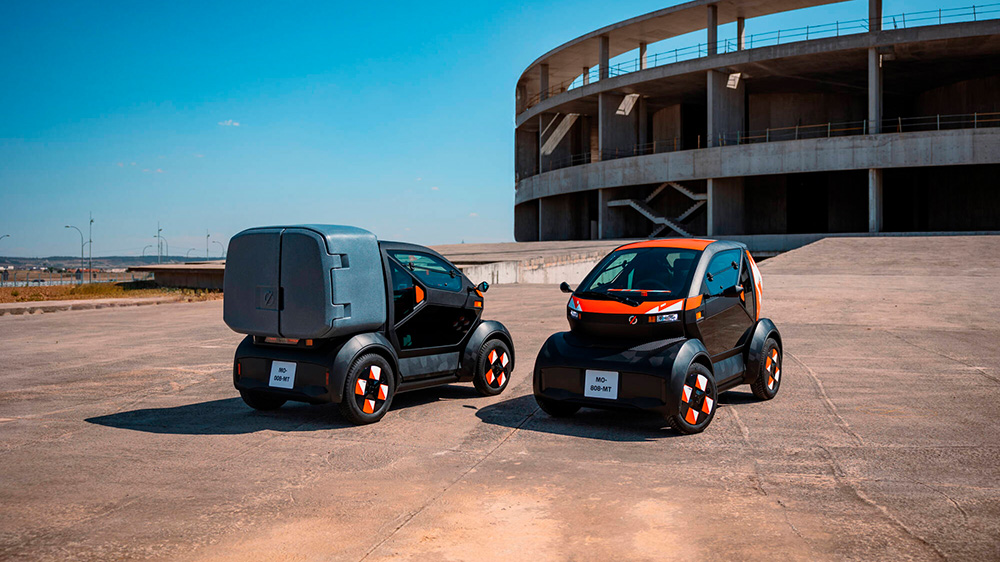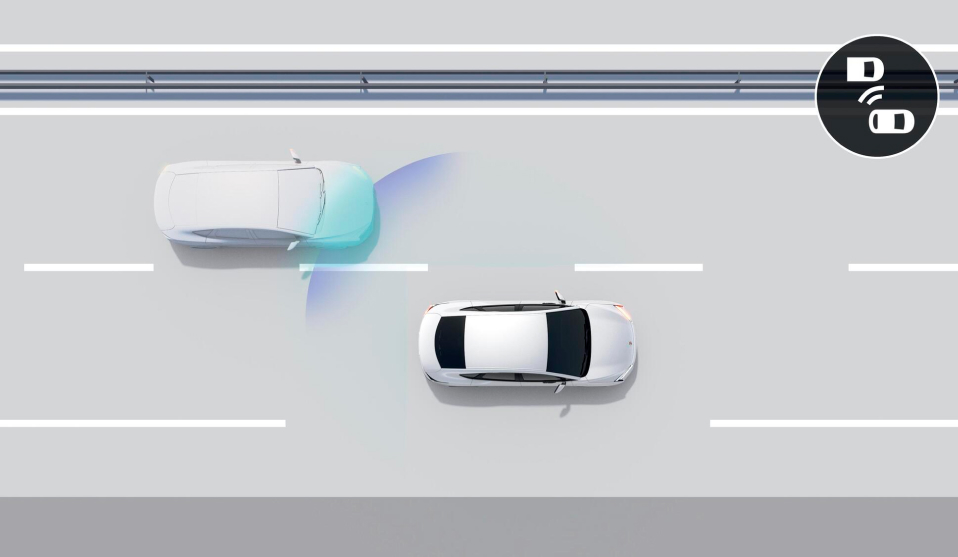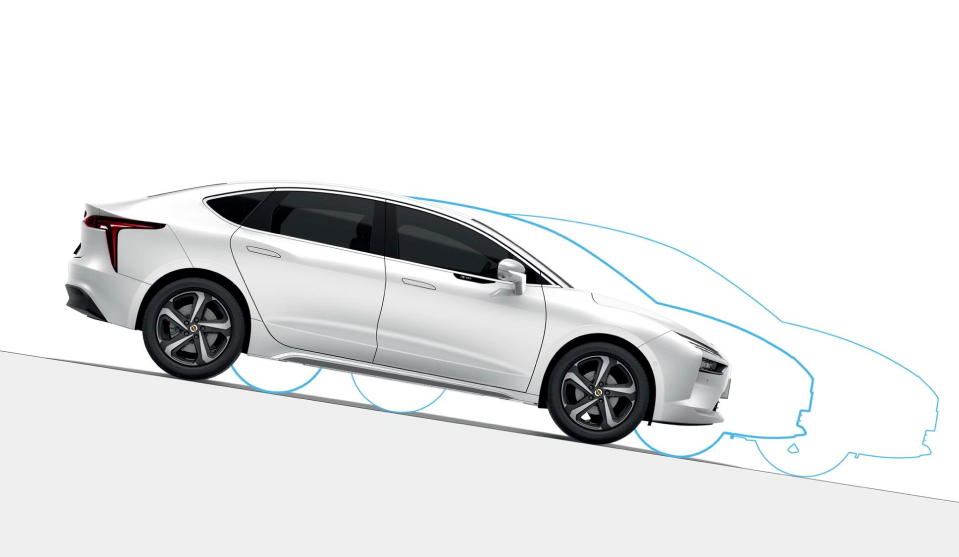As cars become more connected, they’re increasingly resembling rolling smartphones. They share the same functionalities, employ the same onboard technologies, and possess the same abilities to interact with our digital environments, measure performance, guide us, and assist us in our daily lives. Nowadays, these conveniences hardly surprise most people, which tends to overshadow the fact that, much like smartphones, cars serve as breeding grounds for technological innovation. Gradually, they’ve transformed into interfaces between drivers and the road, capable of adapting to driving habits, providing traffic updates, suggesting the quickest routes to the supermarket, or directing the driver to available charging stations. And this is just the beginning. At the heart of this ecosystem lies the ever-expanding world of data.
cars as giant scanners
The ever-expanding capabilities of artificial intelligence have helped develop new ways in which vehicles can assist us in our journeys, especially when it comes to road safety. Just imagine the possibilities of a vehicle constantly scanning its surroundings and instantly feeding that information into a road database. By overlaying datasets collected by vehicles on the road, it becomes relatively straightforward, through computer analysis, to identify any changes or irregularities in road conditions. This is a game-changer for urban planners aiming to improve traffic flow in cities. Moreover, it allows for the creation of a comprehensive map detailing the state of a country’s road infrastructure, greatly facilitating maintenance efforts by enabling proactive repairs before road quality deteriorates. Europe alone has over 70,000 kilometers of roads to monitor and maintain, particularly for its highway network. The annual cost of road infrastructure maintenance is estimated at a staggering 100 billion euros for OECD1 countries. This highlights a critical economic concern.
roads as warning systems
On the flip side, the growing army of sensors now embedded in our infrastructure opens up the possibility of a ‘smart road’ capable of analysing and providing real-time updates on the condition of the vehicles using it. This could mean spotting drowsy driving risks, much like how we currently receive alerts about conditions such as roadwork or heavy traffic. It might even foresee a potential mechanical issue in a vehicle and notify the driver before it turns into a major breakdown. This is another step toward the concept of predictive maintenance, where data analysis becomes a powerful tool for anticipation—essentially, preventing issues rather than dealing with them afterward. From the perspective of vehicles, tapping into this data also offers a way to provide tailored maintenance recommendations for each driver’s vehicle or to continually assess the wear and tear status of an entire fleet of automobiles in real-time. This enables efficient scheduling of maintenance and repairs while ensuring a better distribution of workload among repair shops and dealerships.
using visualisation to create (greater) awareness
In the world of data management, it’s often said that we can only effectively manage what we can measure. The true value of the data we collect lies in its ability to easily translate into tangible indicators. This data becomes a precious resource for evaluating how each car is individually used. This level of personalisation opens up new possibilities, especially in the realm of insurance, where policies can be tailored to align with the actual number of kilometers driven or the driving habits of each motorist, potentially leading to reduced premiums for safe drivers. Moreover, the positive impact of having an indicator on each vehicle’s dashboard, promoting awareness and encouraging responsible driving practices, cannot be underestimated.
digital twin to the rescue!
The ability to model data is a trump card that’s currently ushering in the era of digital twins. Many industries are delving into this concept, which involves creating a virtual representation of an object or system capable of responding based on the data it receives. It’s like having a kind of magical avatar that allows us to conduct a wide range of experiments to gain a better understanding of their real-world implications, all while avoiding the associated risks. From environmental predictions to simulating industrial scenarios, testing the resilience of complex systems, exploring interactive behaviors, or diagnosing wear and tear, the potential applications of this concept are still evolving.
massive data and the circular economy
When applied to the world of automobiles, this digital twin concept is revolutionising our understanding of how each vehicle behaves throughout its entire life cycle. It allows for targeted interventions at just the right time and place, such as repairing a worn-out part instead of replacing an entire unit, or even optimising battery lifespan and recycling used batteries. The underlying idea is clear: prevention is better than cure. Now, imagine that every spare part can be easily identified and tracked. Data then becomes the driving force behind a circular economy, encouraging material recovery and reuse. This becomes even more powerful when integrated with blockchain technology, ensuring the authenticity and complete history of each component. From an industrial standpoint, the thorough analysis of this micro-data helps identify parts or systems prone to premature wear and tear. This, in turn, leads to continuous improvements in manufacturing processes, design quality, and, ultimately, the reliability of vehicles. It’s all about modeling, projection, and traceability, with data emerging as a vital ally in fostering sustainable maintenance practices.
virtual universes for real-world repairs
One of the remarkable aspects of data is its versatility, allowing it to easily adapt to various forms. This adaptability has led to its close relationship with virtual worlds, a realm that the automotive industry couldn’t resist embracing. By combining individual vehicle data, 3D modeling, and remote assistance, virtual or augmented reality headsets become intriguing tools for a ‘hands-on’ approach to maintenance. This approach allows technicians to dive deep into the vehicle’s systems, identifying anomalies and potential issues, all while providing remote diagnostics. Even more impressively, drivers themselves could take direct action based on these remote recommendations. It translates to saved time, fewer trips, and, ultimately, cost savings.
towards an abundance of services
From driving tips to ‘self-service’ repairs and optimised maintenance schedules to personalised mobility offerings, innovations driven by data—or more precisely, its smart utilisation—are plentiful. Many, perhaps, are yet to be unveiled. Beyond providing the enhanced driving experiences and safety we’ve now come to expect, this data also opens up opportunities in the realms of prevention and maintenance. Digital data unveils what often eludes the naked eye within the intricate world of mobility: the countless interactions between a vehicle, its driver, and the road. As a result, it has the potential to become paramount in ensuring the overall performance of the ecosystem… while allowing drivers to relish the pure pleasure of being behind the wheel.








